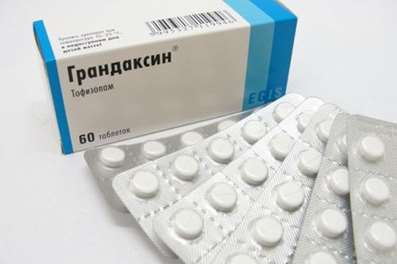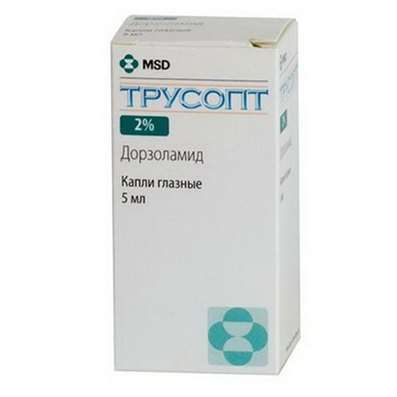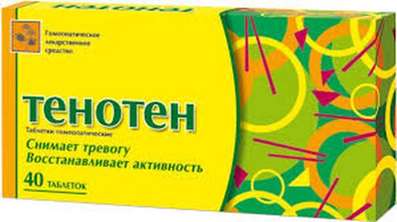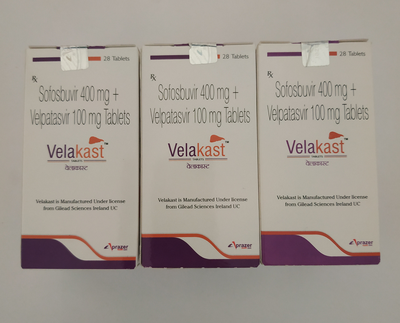Instruction for use: Trospium chloride (Trospii chloridum)
I want this, give me price
chemical name
Endo-3 - [(Phenylacetyl) oxy] spiro [8-azabicyclo [3.2.1] octane-8,1'-pyrrolidinyl] chloride
Pharmacological group
M Cholinolytics
The nosological classification (ICD-10)
F98.0 Enuresis inorganic nature
Urinary incontinence., Urinary incontinence etiology nonhormonal, Urinary incontinence inorganic etiology, Functional enuresis in children, Children's enuresis
N31.1 Reflex neuropathic bladder, not elsewhere classified
hyperreflexia, Overactive Bladder, detrusor hyperreflexia, detrusor hyperreflexia
N31.2 neurogenic bladder weakness, not elsewhere classified
Urinary incontinence in a stressful situation, Atony of bladder, Atony of the bladder (the sphincter) (neurogenic), Impaired function of the sphincter of the bladder, Neurogenic bladder disorders, Neurogenic bladder disorder, Neurogenic bladder, Functional insufficiency of the sphincter of the bladder, Imperative incontinence
N31.8 Other neuromuscular dysfunction of the bladder
Idiopathic hyperactivity detrusor, Neurogenic detrusor hyperactivity
R32 Urinary incontinence unspecified
daytime enuresis, Idiopathic bladder instability, Urinary incontinence, nocturia, The disorder of the bladder sphincter function, Spontaneous urination, Mixed forms of urinary incontinence, Functional disorders of micturition, Functional micturition disorders, Functional enuresis in children, Enuresis
R35 Polyuria
Pollakuria, Night pollakiuria, Pollakiuria and nocturia, Night polyuria, Acute polyuria
Code CAS 10405-02-4
Characteristics
Quaternary ammonium base.
The crystalline substance is from colorless to slightly yellowish in color. The solubility in water is about 1 g / 2 ml. Molecular weight 427.97.
Pharmacology
Pharmacological action - spasmolytic, holinoliticheskoe.
He competes with acetylcholine for m-holinoretseptory postsynaptic membranes of smooth muscles. It blocks the muscarinic action of acetylcholine and inhibits the parasympathetic response caused by postganglionic activation of the vagus nerve. Reduces the tone of the smooth muscles of the detrusor of the bladder (other than m-cholinolytic has a direct antispastic effect). In patients with unstable bladder function reduces the frequency of spontaneous contraction of his musculature and urination during day and night, increases the intervals between urination. Relieves or eliminates imperative urge and urinary incontinence.
Reduces the contractile activity of the esophagus, stomach, gall bladder, inhibits the secretion of the salivary glands, relaxes the ciliary muscle.
Efficacy is shown in functional and postoperative spasms of the gastrointestinal tract, gallbladder and ducts, a number of diagnostic studies, including. Fibrogastroduodenoscopy.
Hydrophilic, slightly soluble in lipids, as a result poorly overcomes the BBB. After ingestion, Cmax is reached after 5-6 hours. Excreted mainly by the kidneys in unchanged form.
Indication
Urinary incontinence and mandatory urge to urinate with idiopathic and neurogenic detrusor hyperactivity (including multiple sclerosis, spinal trauma, congenital and acquired spinal cord diseases, stroke, parkinsonism); Detrusor-sphincter dissynergy against intermittent catheterization; In the complex therapy of cystitis, accompanied by imperative symptoms; Pollakiuria and nocturia; Mixed forms of urinary incontinence.
Contraindications
Hypersensitivity, urine retention, narrow-angle glaucoma, tachyarrhythmia, myasthenia gravis.
Restrictions on the use
Diseases of the cardiovascular system, in which an increase in heart rate may be undesirable (tachycardia, chronic heart failure, IHD); Thyrotoxicosis; Increased body temperature; Reflux esophagitis, hernia of the esophageal opening of the diaphragm, combined with reflux-esophagitis; Gastrointestinal diseases accompanied by obstructive conditions (achalasia and stenosis of the pylorus); Atony of the intestine in elderly patients or weakened patients; paralytic ileus; Diseases with increased intraocular pressure; Chronic inflammatory bowel disease (Crohn's disease, ulcerative colitis); Dry mouth; Chronic lung diseases, especially in weakened patients; Autonomic (autonomic) neuropathy; Kidney failure; Toxicosis of pregnant women; Cerebral palsy; Down's disease; Children's age (safety and effectiveness of use in children are not defined).
pregnancy and lactation
Use in pregnancy is possible only if the expected benefit for the mother exceeds the potential risk to the fetus.
The action category for fetus by FDA is C.
At the time of treatment should stop breastfeeding.
Side effects
Dry mouth, violation of the accommodation of the eye.
Angioedema
It was reported on the development of edema of the face, lips, tongue and / or throat when taking trospium chloride. In one case, angioedema was noted after the first dose. If the edema develops, the drug should be immediately withdrawn and appropriate therapy performed.
Patients should be warned about the possibility of angioedema development while taking trospium chloride.
Results of placebo-controlled trials
In placebo-controlled trials with patients treated with trospium chloride (n = 591) or placebo (n = 590) at a frequency greater than 1%, the following side effects were noted (next to the name, the percentage of this side effect in the trospium chloride group , In brackets - in the placebo group):
On the part of the intestine: dry mouth - 20.1% (5.8%), constipation - 9.6% (4.6%), pain in the upper abdomen - 1.5% (1.2%), Dyspepsia - 1.2% (0.3%), flatulence - 1.2% (0.8%).
From the nervous system and sensory organs: headache - 4.2% (2%), increased fatigue - 1.9% (1.4%), dry eye syndrome - 1.2% (0.3%).
From the urinary system: urinary retention - 1.2% (0.3%).
Other adverse events observed in Phase 3 of placebo-controlled clinical trials in the US were observed at a frequency greater than 0.5% in patients receiving trospium chloride and exceeding placebo: tachycardia, blurred vision, bloating, vomiting, dysgeusia, dry throat, Dry skin.
During the period of clinical trials, 1 case of angioedema was recorded.
Post-marketing experience
There are reports received in the postmarketing period, about the development of the following adverse effects when taking trospium chloride (their association with the drug is not established).
On the part of the digestive tract: gastritis.
From the cardiovascular system: palpitation, supraventricular tachycardia, chest pain, syncope, hypertensive crisis.
From the nervous system and sensory organs: visual impairment, hallucinations, delirium.
Allergic reactions: Stevens-Johnson syndrome, anaphylactic reactions, angioedema, rash.
Other: rhabdomyolysis.
Interaction
Potentiates the action of amantadine, tricyclic antidepressants, quinidine, histamine H1 receptor blockers, disopyramide, beta-adrenomimetics.
Interaction with metformin
In studies in healthy volunteers, simultaneous administration of 500 mg of metformin (in the form of immediate-release tablets) twice a day with 60 mg of extended-release trospium chloride reduces the systemic exposure of trospium chloride: AUC0-24 - 29% on average, Cmax - On 34%.
Simultaneous application with drugs, excreted kidneys through tubular secretion
Possible pharmacokinetic interaction with other drugs that are excreted by active tubular secretion (eg procainamide, pancuronium bromide, morphine, vancomycin, tenofovir). The simultaneous use of trospium chloride with these drugs can lead to an increase in its concentration in the blood serum. It is recommended to carry out careful monitoring in patients with combined use of these drugs.
Routes of administration
Inside.
Precautions
If the function of the detrusor sphincter is impaired, a full discharge of the bladder by catheterization should be ensured. In autonomic disorders of the bladder, their cause should be established before the start of therapy. Before prescribing the drug, you must exclude the presence of urinary tract infection and bladder carcinoma. Do not use during work drivers of vehicles and people whose profession is associated with increased concentration of attention.

 Cart
Cart





